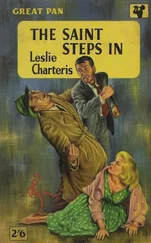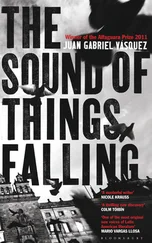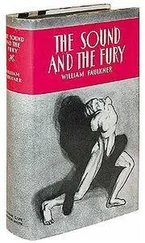Sammy does not acknowledge the law of the nightgowns and disrupts it at every opportunity: “He always needs something urgently, that Sammy, when I’m already in my nightgown,” the mother complains, but she complies anyway, gets up, goes out, gets herself dirty with the urgent request, comes back, and puts on a new, clean nightgown, but without the pristine thrill of the first one. Now he’s in a big hurry; before he wasn’t in a hurry but now he remembers that he is, the car standing on the road next to the shack refuses to start, it needs a little push. “Come on,” he urges them both, “give me a little push.” “But first we have to get dressed,” Aunt Marcelle complains. “How can we go out like this?” They go out like that, in their nightgowns, and push the Chevrolet almost to the turn in the road, splitting their sides with laughter. Side by side they march down the middle of the road back to the shack. “How we laughed,” says Aunt Marcelle, wiping her eyes and glancing sidelong at the mother. “How we laughed, didn’t we, Lucette?” she asks, and her eyes suddenly become thoughtful, revealing a void of anxiety in the look behind the sidelong glance that for a moment recalls Corinne, flickering and vanishing into the darkness.
They return to the kitchen table, but not to the cards and the pickled turnips, but to a dish of oats, cooked for hours in milk and served with sugar, cinnamon, coconut, and chopped walnuts: according to tradition, the dish is prepared on the Saturday morning after a baby’s first tooth comes out, because of the shape of the oats, which look like babies’ teeth. Aunt Marcelle wanted it now, without taking any baby or tooth into account: “What, aren’t we people, too?” she demands, polishing off bowl after bowl. The white nightgowns are spotted now with little stains of mud, grease, the red juice of the pickled turnips, and the cinnamon-colored oats. The mother examines the soiled nightgowns sadly: “We’ll put them in bleach, and if the stains don’t come out — too bad, we’ll throw them out and buy new ones,” she cheers herself up.
Corinne, on the other hand, never threw out her nightgowns. In general, she didn’t throw anything out—“she’s got a whole museum there,” said the mother: snow-white nightgowns, made of the finest pure cotton or the finest silk, simple-looking and expensive, lay starched in her closet with fragrant little bags of dried lavender between them. She collected them, gathering them one by one from fancy lingerie boutiques or secondhand shops, wore them once only, when she tried them on, and added them to her collection. From time to time she took them out of the closet, spread them out on the bed, examined them, folded them neatly, and returned them to the closet. “Who are you keeping them for?” demanded the mother, outraged by what in her eyes was the very essence and symbol of everything that had gone shockingly wrong in Corinne’s life. “Until when?”
Corinne did not reply, not then and not ever. She went on sleeping or pretending to sleep on the couch in the shabby rags she wore in the house, her head on the baby’s teddy bear, muttering, “in a minute, in a minute,” to Mermel, who asked her for the third time to come to bed.
THE PICTURE: LE BALCON (3)
THE MOTHER MOVED the couch from the corner of the yellow hall, which even after it stopped being yellow recalled its first, original color, like hair roots that go on growing, peeping out under the dyed hair. After the couch migrated from its place, so did the child’s gaze, the one kept exclusively for the picture and the way it could and should be looked at. In place of the couch stood an armchair, to its right a sideboard with long, narrow glass doors. Sitting on the armchair opposite the door to the shack (open or closed), she had to tilt her head to the left to see into the passage and the picture hanging there, to make an effort: seeing the picture now required a determined effort of will — and this changed everything, turned everything upside down. The three people on the balcony in the picture no longer drifted into her field of vision as in the days when she lay on her side on the couch and they invaded the corner of her eye; they had to be deliberately caught, fished by force out of the semidarkness of the passage.
There was something lost about the picture, trapped in its own crookedness, but unlike before, when a sidelong look from the corner of her eye brought the picture to her, made it hers, this gesture was now a pointless move, something that brought no gain. Once or twice the child tried to shake all this feeling off, to confront the picture “face-to-face,” and she went and stood in the passage, switched on the light, and stared at the picture, eye to eye; she looked directly at it and almost immediately retreated from the only thing she succeeded in seeing: the loss of what she had seen before, mysterious and swarming with life. The people in the picture, the annoying man with the mustache, the timid standing woman, and the young woman with the blazing black look — all three of them seemed in the frontal gaze to be almost desiccated, as if their insides had been spooned out of them, leaving an empty shell.
And then, almost on the point of giving up, on the verge of the picture’s slipping away, something was retrieved, hidden and elusive, as in a dream, but retrieved nevertheless: suddenly, for a split second, when she sat down on the armchair in the hall, the picture flickered on her right, caught in the corner of her eye, reflected in the long glass doors of the sideboard. Not all of it was reflected, only part, almost a third that was almost completely meaningless, appearing as patches of color of which the strongest and most resonant was the striking green of the iron railing, the green railing that defined the figures in their places, on the balcony, preventing them as it were from falling into a dark, deep void. Out of the deconstructed picture reflected in the glass — the patches of color that related to each other but did not make up a story that could be told, slashed by the vehement green of the iron railing — the main thing appeared again, what had been lost and returned in a different shape and form: the sense of the right, true estimation of the depth of the secret. The secret, the child felt, or thought she felt, that didn’t belong to anyone and that nobody could claim to own, that wasn’t stamped on anyone’s seal, not even hers, and stemmed from the connections between things, from the invisible glue joining them together more than from the things themselves on their own. And then, a few minutes later, the reflection disappeared: somebody switched off the light in the kitchen.
SOMEBODY SAID THAT the mother had been without a man for nearly forty years (not Corinne, who didn’t permit herself to say it, not Sammy, who wasn’t capable of saying it, and not the Nona, who counted not in years but in eternities). Somebody else — not the child, an abstraction of the child — thought to himself, how can it be forty, when did those forty begin, and how was it possible to count them, to draw a line from when they began to a moment when it became possible to say “forty years,” to say “without a man”?
Because the child and Sammy and maybe also Corinne didn’t think in terms of “without a man,” or even “a man,” among other things, because Maurice, who was presumably supposed to be the “man,” was utterly and completely Maurice, from top to toe, and not some man, with all the attributes of a man, and the mother didn’t think so either — she shuddered, her shoulders shuddered at the inconceivable strangeness of the words that suddenly became hers, came out of her own mouth: “without a man.”
Читать дальше












